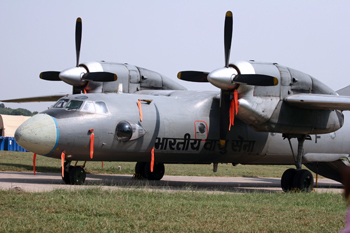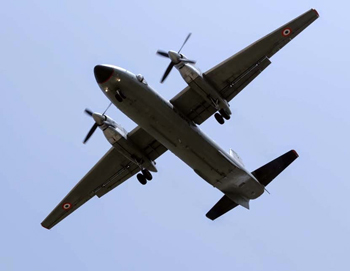INDIAN ARMED FORCES CHIEFS ON OUR RELENTLESS AND FOCUSED PUBLISHING EFFORTS

SP Guide Publications puts forth a well compiled articulation of issues, pursuits and accomplishments of the Indian Army, over the years

"Over the past 60 years, the growth of SP Guide Publications has mirrored the rising stature of Indian Navy. Its well-researched and informative magazines on Defence and Aerospace sector have served to shape an educated opinion of our military personnel, policy makers and the public alike. I wish SP's Publication team continued success, fair winds and following seas in all future endeavour!"

Since, its inception in 1964, SP Guide Publications has consistently demonstrated commitment to high-quality journalism in the aerospace and defence sectors, earning a well-deserved reputation as Asia's largest media house in this domain. I wish SP Guide Publications continued success in its pursuit of excellence.
Disaster Strikes!
The one thing that is clear is that the disaster that has struck the aeroplane was somewhat sudden leaving the crew with no time to make a distress call.
 |
By Air Marshal B.K. Pandey (Retd) Former Air Officer Commanding-in-Chief of Training Command, IAF |


While everything seemed to be going well for the Indian Air Force (IAF), it was struck by a disaster on the morning of Friday, July 22, 2016 when one of its An-32 transport aircraft with 29 passengers and crew on board, went missing over the Bay of Bengal. The Sulur-based An-32 aircraft that was on a weekly courier flight to the Andaman and Nicobar Islands, took off at 0830 hours from the air base at Tambaram, on the Southern outskirts of Chennai. On board were six crew members and 23 passengers that included 11 personnel from the IAF, nine from the Indian Navy, two from the Indian Army and one from the Indian Coast Guard. After covering a distance of around 1200 km, the aircraft was to land at INS Utkrosh Naval Air Station at Port Blair the capital of Andaman and Nicobar, three hours later.
After departure from Tambaram, the aircraft climbed to its cruising altitude of 23000 feet above mean sea level. The last radio call that was received from the aircraft around 16 minutes after takeoff indicated that operations thus far were normal. However, 42 minutes after takeoff i.e. at 0912 hours, when the aircraft was 280 km East of Tambaram, radar contact with the aircraft was lost somewhat suddenly . Although there was no distress message received from the aircraft, reports indicate that the aircraft was seen by the radar operator to be in a steep turn to the left before disappearing from the screen.
A massive search and rescue operation was launched soon after to locate the aircraft. Participating in the effort are the P-8I long range maritime patrol aircraft recently acquired by the Indian Navy, Dornier DO-228 aircraft of the Indian Coast Guard, C-130 and An-32 aircraft of the IAF along with ships of the Indian Navy and the Indian Coast Guard.
The actual cause of the loss of the aircraft can only be ascertained if the Black Box that contains the Flight Data Recorder (FDR) and the Cockpit Voice Recorder (CVR), is recovered and based on the data available, the last 30 minutes of the ill-fated mission is analysed . At this point in time, one can only speculate on the possible cause.
The first thing that comes to mind is adverse weather. In this case, the weather conditions were not adverse and hence the possibility of weather being a contributory factor can be ruled out.
The one thing that is clear is that the disaster that has struck the aeroplane was somewhat sudden leaving the crew with no time to even make a distress call. Such a situation can arise if there is powerful explosion on board leading to disintegration of the aircraft in flight. Could the aircraft have been sabotaged by anti-national elements? This possibility would have to be carefully examined by the investigating agency. Given the growing influence of the ISIS, one ought not to dismiss this possibility even if it appears to be far too remote and outside the realm of possibility. After all, the enemy did try to devastate Air Force Station Pathankot and having failed in the brazen attempt, could opt to target relatively softer targets in collusion with their sympathisers who could well have penetrated the Indian security establishment. While this may sound far-fetched and even bizarre, it may be desirable to investigate this possibility. This has implication for the IAF bases located in South India that would be soft targets for the enemy.
But the most likely cause could be structural failure resulting in separation of the left wing leading to the aircraft entering a steep spiral with rapid loss of height. This could happen if a fire had developed in the left engine that was not controlled by the integral fire extinguisher. In this situation, there is little that the crew could have done to regain control.
We only hope that the wreckage of the aircraft is located and the Black Box recovered to enable the IAF to unravel the mystery behind this disaster.
Photo Credit: SP Guide Pubns, MoD





